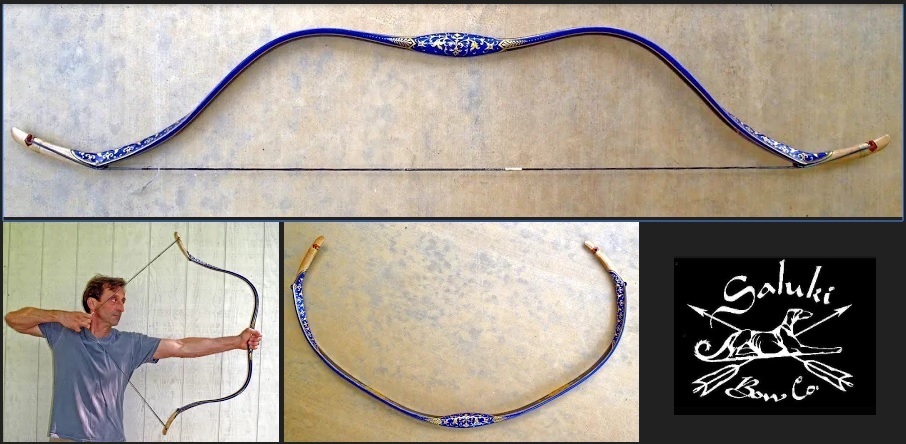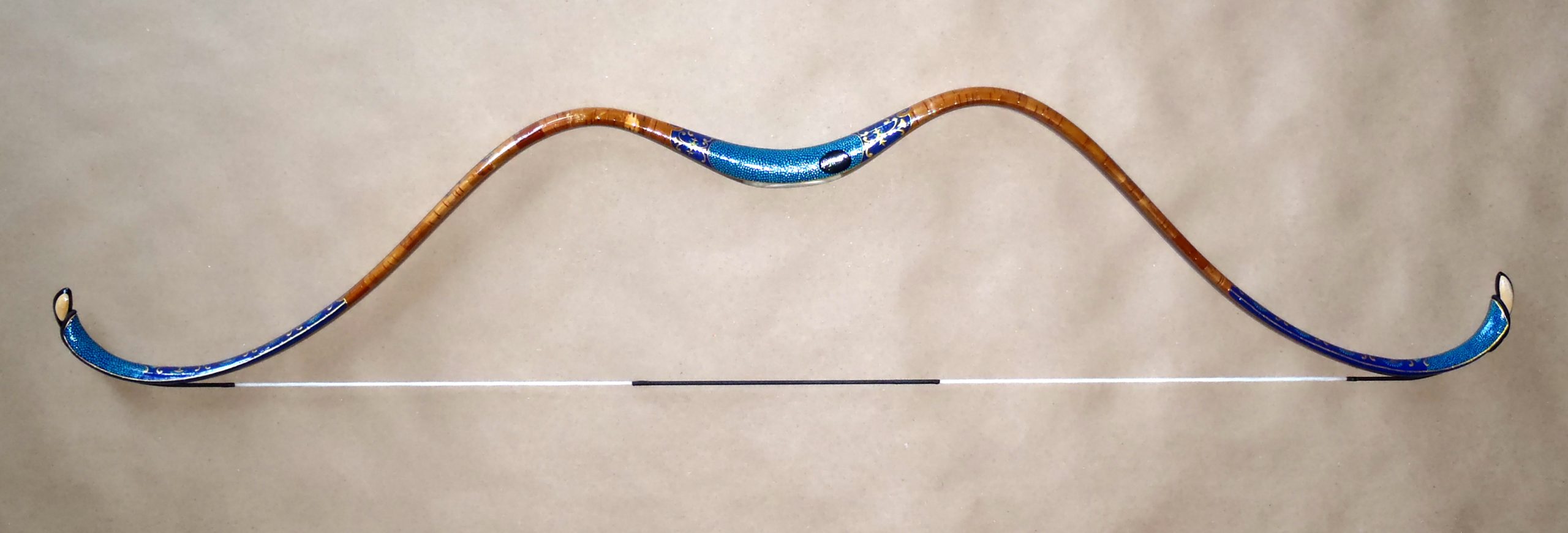The Horn Bow
The Horn Bow – Bows That Are Alive
Long before the industrial age, bow design and construction underwent a gradual, yet pronounced evolution on the Eurasian Steppe, the cradle of the horn bow. Stretching from China in the east to Hungary in the west, a vast expanse of grasslands extend as far as the eye can see. The people inhabiting this rugged landscape were nomadic pastoralists. That is, they kept herds of animals for sustenance which migrated with the seasons, and as pastures depleted. Their shepherds migrated with them through the steppe. These nomads were the first to tame and ride horses which were crucial in helping them manage and protect their herds over vast distances. Other than being experts in horsemanship, they were also known for their aptitude with the bow and arrow.
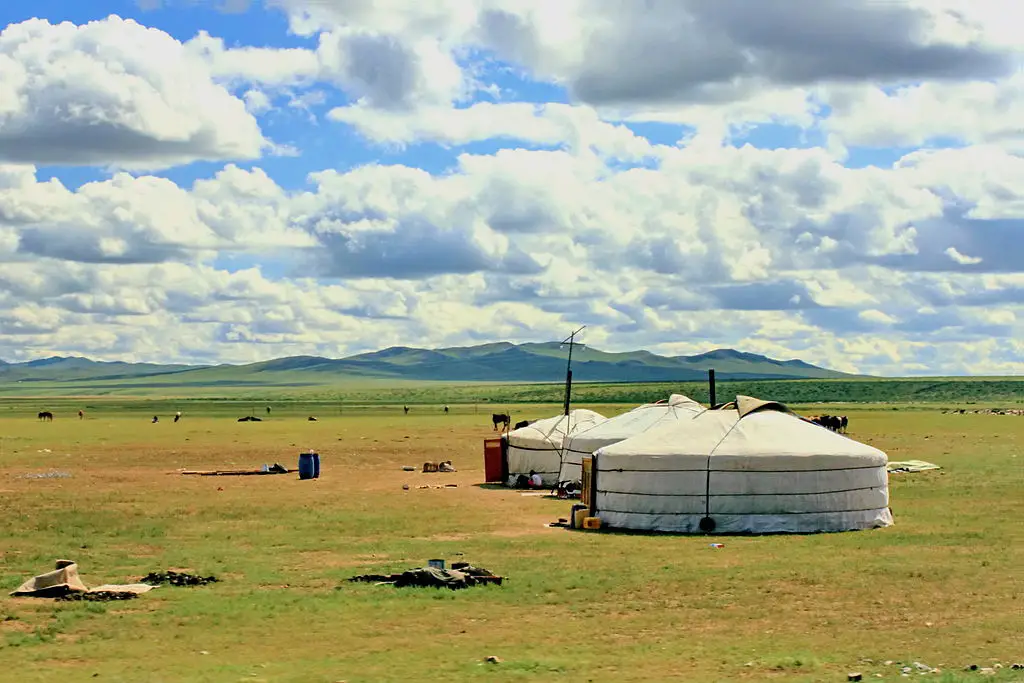
A Complex Bow
When we think of a traditional bow in it’s simplest form, we think of a piece of wood with its ends connected by a string. In ancient and medieval times there were plenty of dense forests in northern Europe which could be used to make bows. On the grasslands to the East, however, there is a considerable lack of trees. So how could nomads from these regions construct some of the most powerful and technologically sophisticated bows in history? This article explores the composite horn bow, it’s construction, and the archers who used them.
Horn Bow & Composite Bow
With a lack of suitable lumber in abundant quantities, bow evolution on the Steppe took a different route. Instead of relying solely on wood for the material, bowyers on the Steppe used a combination of materials in very specific configurations to achieve a superior bow design. The structural core of a horn bow is still typically a type of wood, however, this wood is laminated between the other crucial ingredients: sinew and horn. As you will discover, horn and sinew have specific properties that can enhance the mechanics of a bow. The factors that contribute to a highly efficient horn bow are the materials used as well as the geometry of the bow itself. Why would horn be such a good material to include in bow construction? Let us examine some of the mechanical properties of horn and it’s incorporation into bow design.
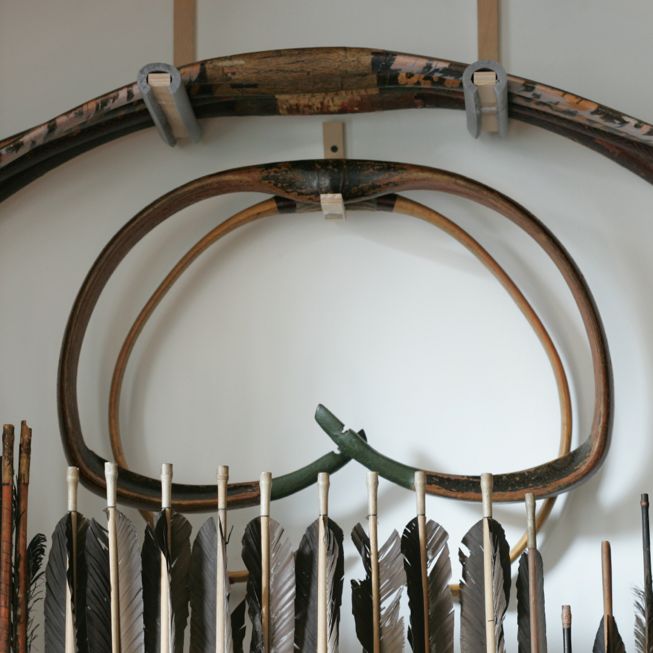
The Horn Bow – The Properties of Horn
What is horn exactly? Horn is made of keratin. Fibrous structural proteins comprise keratin, a relatively abundant protein in nature. Keratin comes in two, slightly varied forms: α-keratins, which are found in all vertebrates, and β-keratins are found only in the reptiles and birds. Your hair, nails, and calluses are all comprised of α-keratins. The fibrous filaments formed by keratin are what give horn a special mechanical property: it resists compression.
Toughness and Resistance
If you squeeze a piece of horn, it will naturally resist. Also, when the pressure is released, it will have a tendency to return to its original state. This ability to plastically deform without fracturing gives horn a unique ability among biological materials. Only chitin, another biological material found in the exoskeleton of anthropods, and the cell walls of certain fungi, has such toughness. Keratin is also highly resistant to digestion, that is why cats cough up keratin balls (hairballs).

Horns are different from antlers, which are not permanent. These fibrous proteins deposit around cores of live bone in certain mammals (Antilocapridae (pronghorn) and Bovidae (cattle, goats, antelope etc.) are where we get horn. The arrangement of keratin into tubules and filaments along the axis of growth of the horn makes it very resilient. This evolution of horn-like structures is nothing new. Dinosaurs hundreds of millions of years ago had already evolved intricate horn structures. Possessing these features were important for the defense of the animal and also for combat within the species for mating rights. Fortunately for the Steppe nomads, plenty of horned animals abound on the grasslands of Eurasia.

How to Make a Hornbow
The concept of a bow made from a composition of various materials is simple enough to explain. A core of wood is sandwiched between a material that resists compression (horn) and material that resists tension (sinew). Utilizing this concept is how composite horn bows are made. The elastic properties of sinew were known to ancient peoples. Unlike wood fibers, sinew fibers stretch more than without breaking. Many Native American bows are made with sinew backing alone, without the addition of horn.
Along with the application of sinew, the addition of horn to the belly of the bow compliments the tensile strength of sinew on the back. These two crucial laminations in addition to the actual recurve geometry of the bow enabled these tools to store and efficiently release tremendous energy.
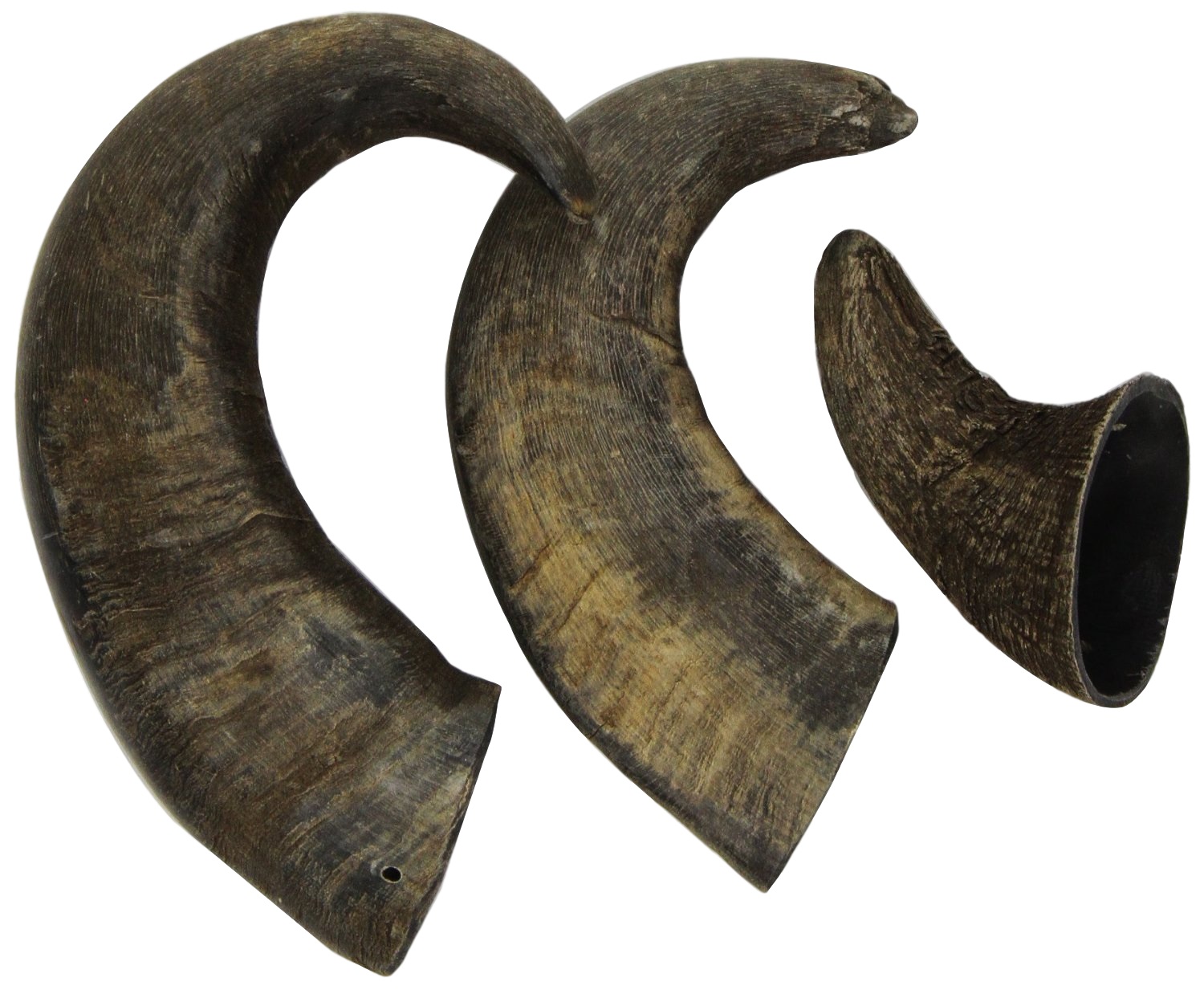
Recipe & Ingredients for Making a Horn Bow
Several variations of composite horn bows have been made throughout history and into modern times. All consist of the same basic ingredients.
- Wooden core (maple, bamboo, fruit trees)
- Sinew (separated into its constituent fibers)
- Horn (cut into strips)
- Natural adhesive (fish bladder glue)
- Bark, leather, paint (to wrap and/or seal the final product to help preserve and protect it from the elements)
From J.B. Pritchard’s book, The Ancient Near East – An Anthology of Texts and Pictures (2011), quoting from Tale of Aquat, a 14th century B.C. Ugaritic text:
I vow yew trees of Lebanon
I vow sinews from wild oxen;
l vow horns from mountain goats
Tendons from the hocks of a bull
I vow cane-forest reeds:
Give these to Kothar wa-Khasis
He’ll make a bow for thee
The Wooden Core
The previously mentioned ingredients varied according to region and time period, however certain types of material were clearly favored. Maple was used most often as the wooden core. The grain in maple run straight and parallel. Wood from maple also has good elasticity and bonds well with adhesives. Yew and bamboo were also fairly common in some areas as a core material.
The Horn
Not all horn is created equal! Horn from certain species is denser and more resistant to compression. Horn from the water buffalo (Bubalus bubalis) is the most common material used in composite bow manufacture. The horn, being cut lengthwise, is applied to the belly of the bow in continuous strips. The horn may be heated or steamed and straightened before application to remove any curls and for uniformity. Other common sources of horn were from mountain goats (Turkish and Saracen bows) and the Hungarian Grey Cattle (Bos taurus, Hunnic, and Magyar bows).
The Sinew
The tendon from various animals was used in different regions. Ostrich, camel and cattle tendon came into use at various times by bowyers. A more common source of sinew for modern horn bow makers is derived from the tendons running along the spine of various quadrupeds. Known as “backstrap” tendon, it can be more easily separated and broken down into it’s finer constituent fibers. The tendon is typically beaten with a mallet or club, then worked by hand so it may be separated into finer strands. The strands are then combed and set aside, ready to be applied to the back of the bow.
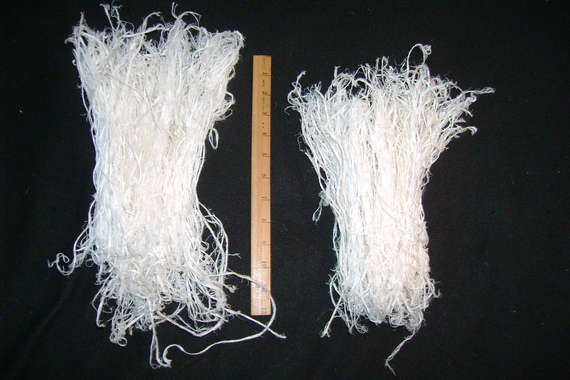
The Adhesive
The most effective natural adhesive for organic horn bow production is glue derived from the bladders of fish, commonly sturgeon. The air bladders after being dried, shredded, and pounded into small grains are boiled to make the adhesive solution. Being transparent, colorless, water-soluble, and slow drying, it is one of the best natural adhesives around. Comprised mostly of collagen, another protein molecule like keratin, collagen is present in all connective tissues (tendons) in animals. It forms a very strong bond with other organic substances and most importantly, it is relatively slow to dry. This allows the bowyer to take his time in applying it.
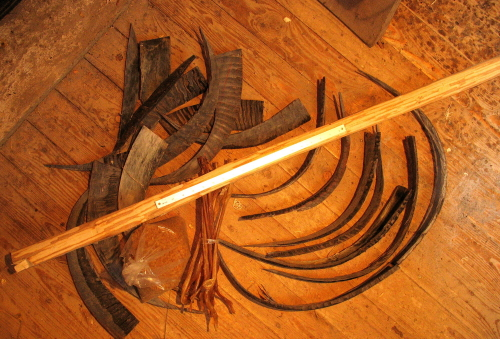
Horn Bow Manufacture, Step by Step Summary
Material Preparation
- The wood for the core is selected and cut. The tree is typically cut during a dormant phase (not growing in winter)
- The horn is selected and pre-cut to the appropriate sizes
- The sinew is prepared by drying and separating the fibers
Assembling the Core
- The sections of the core are cut out and glued together (see “parts of traditional horn bow”)
- The assembled core is sanded down to its finished shape
- The belly of the boy is made slightly convex to receive the slightly concave horn
Addition of Horn
- Both the belly of the bow and the concave side of the horn is scored and scraped with shallow grooves using a scraping tool called a tashin. This will increase the surface area where the two materials will meet.
- Glue is applied to affix a strip of horn to each limb
- A helical cord is wound around the joined core and horn. This applies even pressure and holds the adjoined pieces together while they cure.
- The ends are tied between the nocks that hold the bow in a reflex position. This maintains the bow in alignment as it dries.
- The bow is placed inside a conditioning box which is insulated and heated. The bow is allowed to dry. Drying time varies and can take weeks to months.
The Horn Bow Receives Sinew
- The bow, with horn attached, is further shaped by drawknives and sanding
- The prepared sinew is soaked in fish glue and carefully placed onto the back of the bow
- A small comb straightens the fibers so the run neatly parallel along with the bow lengthwise
- The more sinew is added the stronger and heavier the draw weight of the bow
- The sinew is allowed to cure before the addition of more layers
- The bowyer makes adjustments to the bow’s shape as the layers are added
- Once the final layer of sinew is added and the bow has reached the desired form, it is then tied in reflex once more. The bow may be left like this to fully cure for many months, typically up to a year or longer
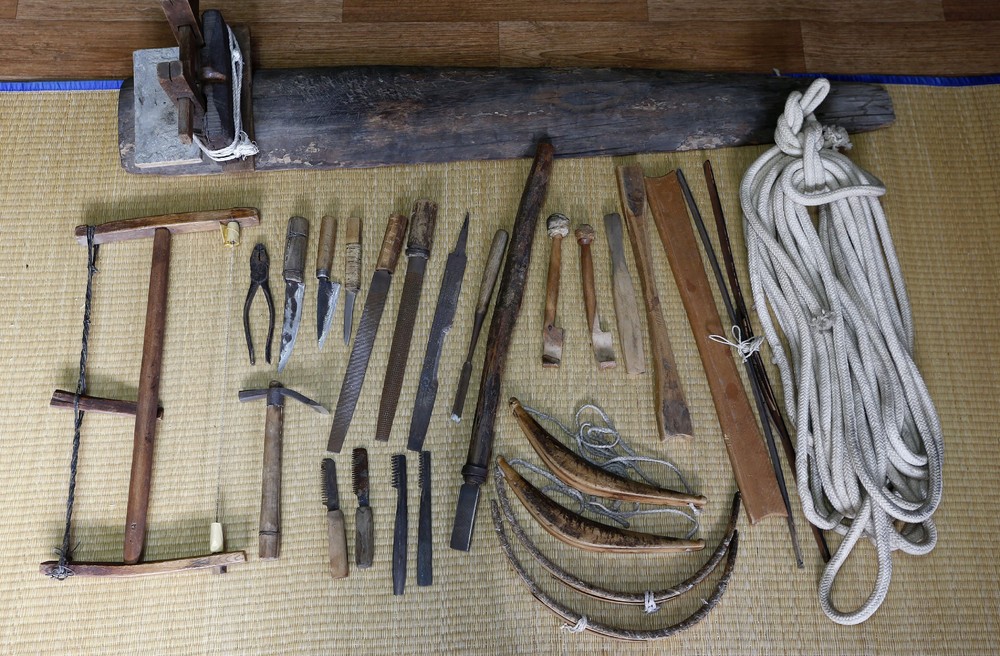
Korean Horn Bow
A highly reflexed version of the Eurasian composite recurve, the Korean horn bow or Guk Gung (Korean: 국궁 hanja: 國弓, or national bow) was made and used for millennia by the Koreans. The design had been standardized for many centuries as it had been relied upon by the Koreans during wars with their neighbors, particularly the Chinese and Japanese. It is one of the shortest traditional bows out there, yet because of an extreme reflex, considerably long draw lengths can be achieved with a Korean horn bow. Most archers draw well past the ear.
Check out this great video on a master Korean bowyer doing his thing. The video is quite old and it is in Korean so put on the subtitles for the translation. A great video nonetheless. Shows you the making of a genuine horn bow from beginning to end.
Mongolian Horn Bow
The effectiveness of The Great Khan’s armies was due primarily to their mobility on horseback and their finely crafted Mongolian horn bows. Made in the classic style of all Asiatic bows of the step, the Mongol bow was seen as far superior to European designs during the medieval ages. Similar in shape to Hunnic and Magyar designs, the Mongol horn bow was produced for centuries, if not millennia on the interior steppe lands. Gradually the original design faded, and now most traditional archers in Mongolia shoot a variant of the Chinese Manchu bow. Some consider a “true” Mongolian composite horn bow to be of the pre-16th century design.
Turkish Horn Bow
The Turks refined bow designs of centuries and millennia past and came up with some of the most efficient and beautiful horn bows of all. Coming from the steppes themselves, the Turks were very familiar with composite horn bows. The Ottoman Turkish horn bows are relatively short, powerful, and beautiful. Some of the most elaborate examples were sealed with lacquer and expertly painted.
Horn Bow For Sale
ArcheryHistorian.com features some exceptional horn bows made by expert bowyer and traditional archery Lukas Novotny of Saluki bows. These bows are made with care and craftsmanship using traditional building techniques and materials. Lengthy curing time is required along with hours of delicate work. These are not the bows you find on Alibaba.com! Expect 18 months minimum to receive one. However, for the true connoisseur out there, a Saluki bow is not only a functional, practical tool but a work of art. Here are some of his previous works (click image for link):
Mongolian Bow Saluki Horn
